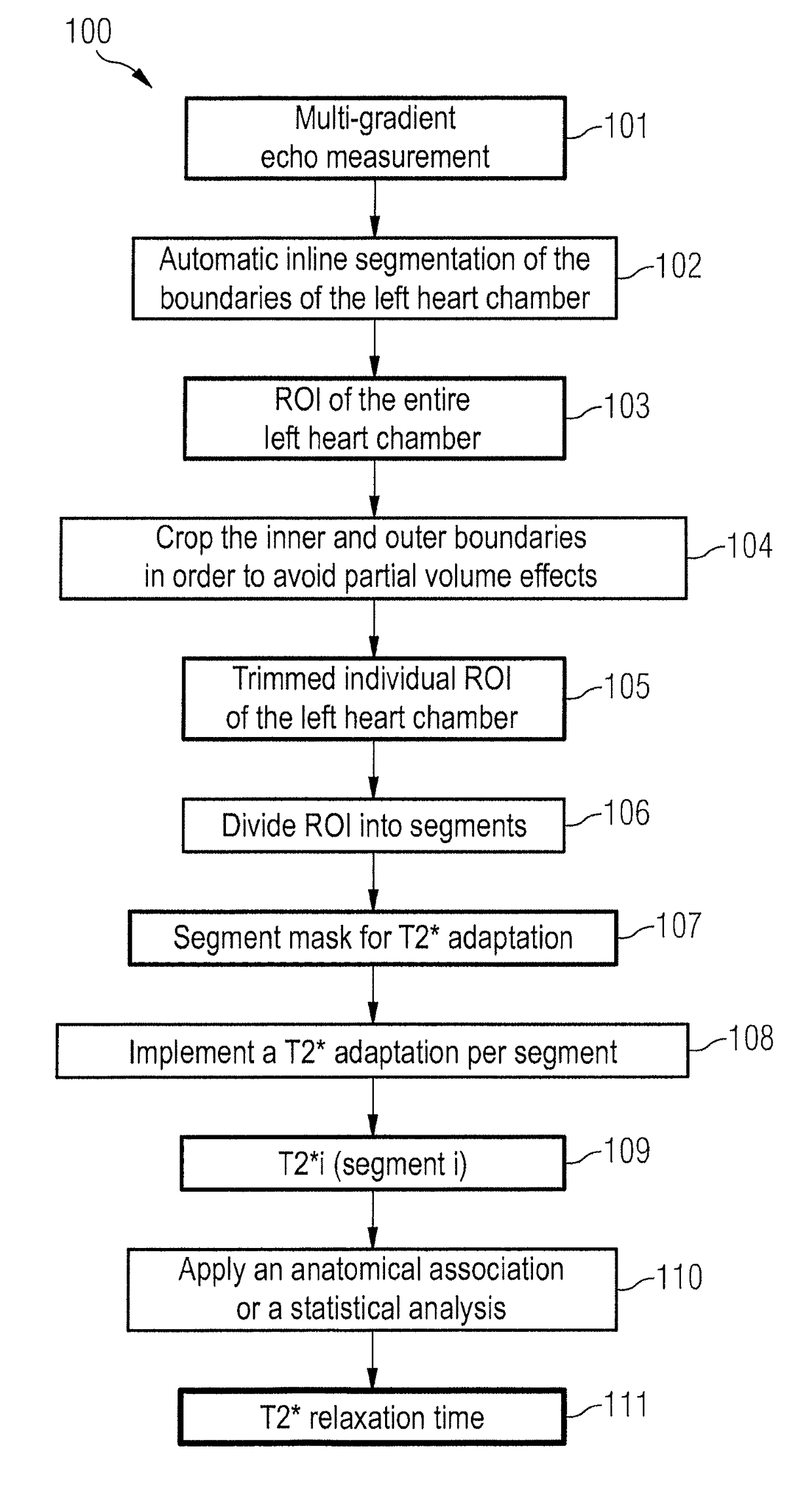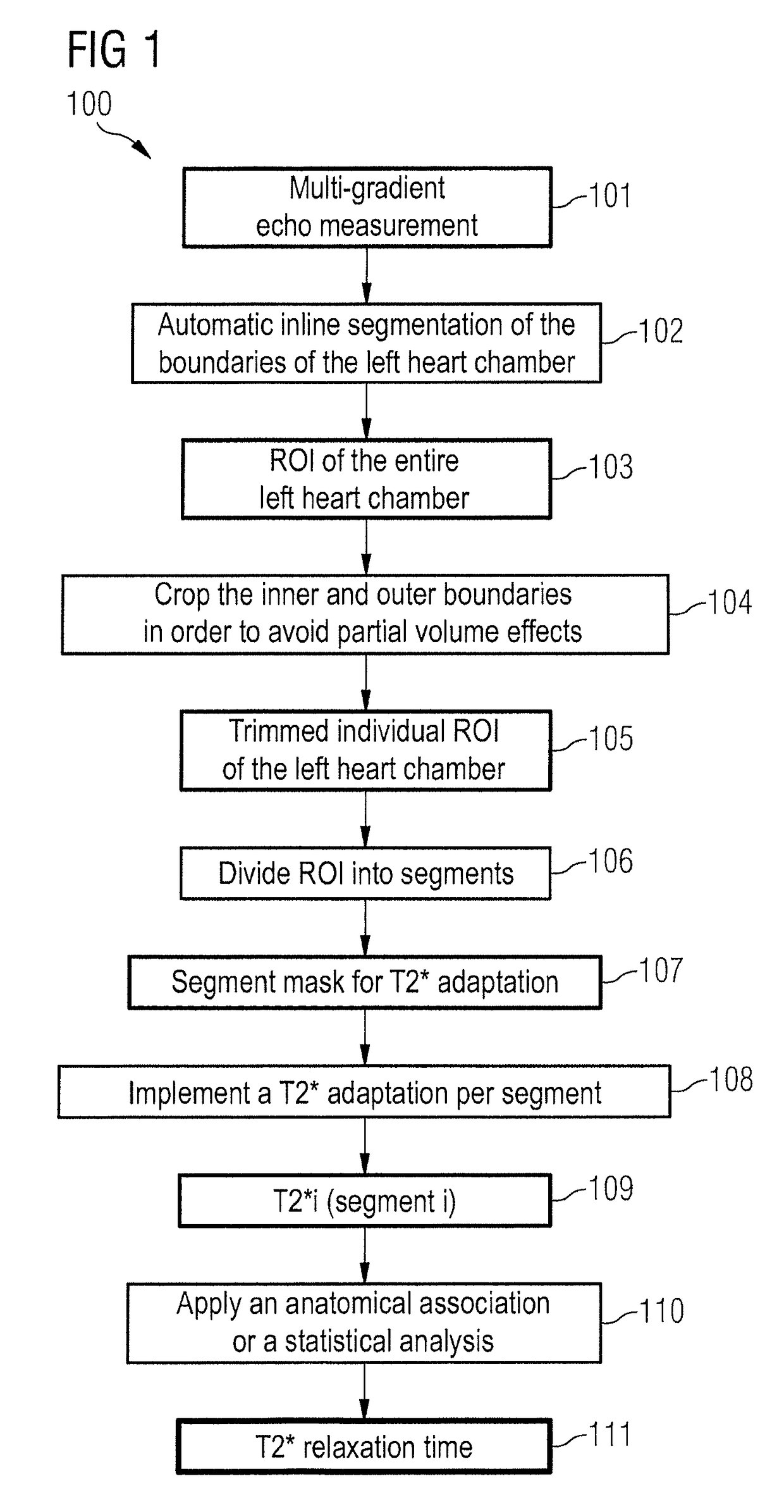Method and apparatus to determine a magnetic resonance relaxation time in the heart muscle in a magnetic resonance examination
a magnetic resonance examination and relaxation time technology, applied in the field of methods to determine the relaxation time of the heart muscle, can solve the problem that the prior art-based inline segmentation algorithm cannot automatically d
- Summary
- Abstract
- Description
- Claims
- Application Information
AI Technical Summary
Benefits of technology
Problems solved by technology
Method used
Image
Examples
Embodiment Construction
[0025]An MR system 700 with which an MR relaxation time in the heart muscle can be determined according to the invention in a magnetic resonance examination is shown in FIG. 7. The MR system 700 has a basic field magnet 701 that generates a polarization field B0. An examination person 703 arranged on a bed 702 is driven into the center of the basic field magnet 701 where the acquisition of the MR signals from an examination region is implemented via radiation of RF pulses and switching of gradients. How MR images—in particular images of a multi-gradient echo measurement—can be generated in a pulse sequence with a series of RF pulses and switching of gradients is known to those skilled in the art and need not be described in detail herein. The MR system 700 is connected with a central control unit 704 with which the MR system 700 is controlled. Among other things, the central control unit 704 has an RF control unit 705 which controls the switching of the RF pulses to deflect the magn...
PUM
 Login to View More
Login to View More Abstract
Description
Claims
Application Information
 Login to View More
Login to View More - R&D
- Intellectual Property
- Life Sciences
- Materials
- Tech Scout
- Unparalleled Data Quality
- Higher Quality Content
- 60% Fewer Hallucinations
Browse by: Latest US Patents, China's latest patents, Technical Efficacy Thesaurus, Application Domain, Technology Topic, Popular Technical Reports.
© 2025 PatSnap. All rights reserved.Legal|Privacy policy|Modern Slavery Act Transparency Statement|Sitemap|About US| Contact US: help@patsnap.com



